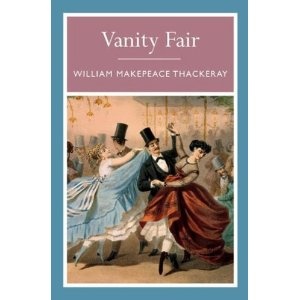Introduction to William Thackeray’s life and works
Table of Contents
Early Life
William Makepeace Thackeray Vanity fair
William Makepeace Thackeray the Virginians
William Thackeray quotes
William Thackeray’s works
Henry Esmond
The History of Henry Esmond (1852) – ISBN 0-14-143916-5
The Virginians (1857–1859) – ISBN 1-4142-3952-1
Arthur Pendennis
Pendennis (1848–1850) – ISBN 1-4043-8659-9
The Newcomes (1855) – ISBN 0-460-87495-0
A Shabby Genteel Story (Unfinished) (1840) – ISBN 1-4101-0509-1
The Adventures of Philip (1862) – ISBN 1-4101-0510-5
The Christmas Books of Mr M. A. Titmarsh
Thackeray wrote and illustrated five Christmas books as “by Mr M. A. Titmarsh”. They were collected under the pseudonymous title and his real name no later than 1868 by Smith, Elder & Co.[26]
The Rose and the Ring was dated 1855 in its first edition, published for Christmas 1854.
Mrs. Perkins’s Ball (1846), as by M. A. Titmarsh
Our Street
Doctor Birch and His Young Friends
The Kickleburys on the Rhine (Christmas 1850) – “a new picture book, drawn and written by Mr M. A. Titmarsh”[27]
The Rose and the Ring (Christmas 1854) – ISBN 1-4043-2741-X
Novels
Catherine (1839–40) – ISBN 1-4065-0055-0 (originally credited to “Ikey Solomons, Esq. Junior”[28])
The Luck of Barry Lyndon (1844), filmed as Barry Lyndon by Stanley Kubrick – ISBN 0-19-283628-5
Vanity Fair (1847–53) – ISBN 0-14-062085-0
Men’s Wives (1852) – ISBN 978-1-77545-023-8
Lovel the Widower
Denis Duval (unfinished) (1864) – ISBN 1-4191-1561-8
Novellas
‘Elizabeth Brownbridge
‘Sultan Stork
Little Spitz
The Yellowplush Papers (1837) – ISBN 0-8095-9676-8
The Professor
Miss Löwe
The Tremendous Adventures of Major Gahagan
The Fatal Boots
Cox’s Diary
The Bedford-Row Conspiracy
The History of Samuel Titmarsh and the Great Hoggarty Diamond
The Fitz-Boodle Papers
The Diary of C. Jeames de la Pluche, Esq. with his letters
A Legend of the Rhine
A Little Dinner at Timmins’s
Rebecca and Rowena (1850), a parody sequel of Ivanhoe – ISBN 1-84391-018-7
Bluebeard’s Ghost
Sketches and satires
The Irish Sketchbook (2 Volumes) (1843) – ISBN 0-86299-754-2
The Book of Snobs (1848), which popularised that term- ISBN 0-8095-9672-5
Flore et Zephyr
Roundabout Papers
Some Roundabout Papers
Charles Dickens in France
Character Sketches
Sketches and Travels in London
Mr. Brown’s Letters
The Proser
Miscellanies
Play
The Wolves and the Lamb
Travel writing
Notes of a Journey from Cornhill to Grand Cairo (1846), under the name Mr M. A. Titmarsh.
The Paris Sketchbook (1840), featuring Roger Bontemps
The Little Travels and Roadside Sketches (1840)
Other non-fiction
The English Humorists of the 18th Century]] (1853)
Four Georges]] (1860-1861) – ISBN 978-1410203007
Roundabout Papers (1863)
The Orphan of Pimlico (1876)
Sketches and Travels in London
Stray Papers: Being Stories, Reviews, Verses, and Sketches (1821-1847)
Literary Essays
The English Humorists of the 18th century: a series of lectures (1867)
Ballads
Miscellanies
Stories
Burlesques
Character Sketches
Critical Reviews
Second Funeral of Napoleon
